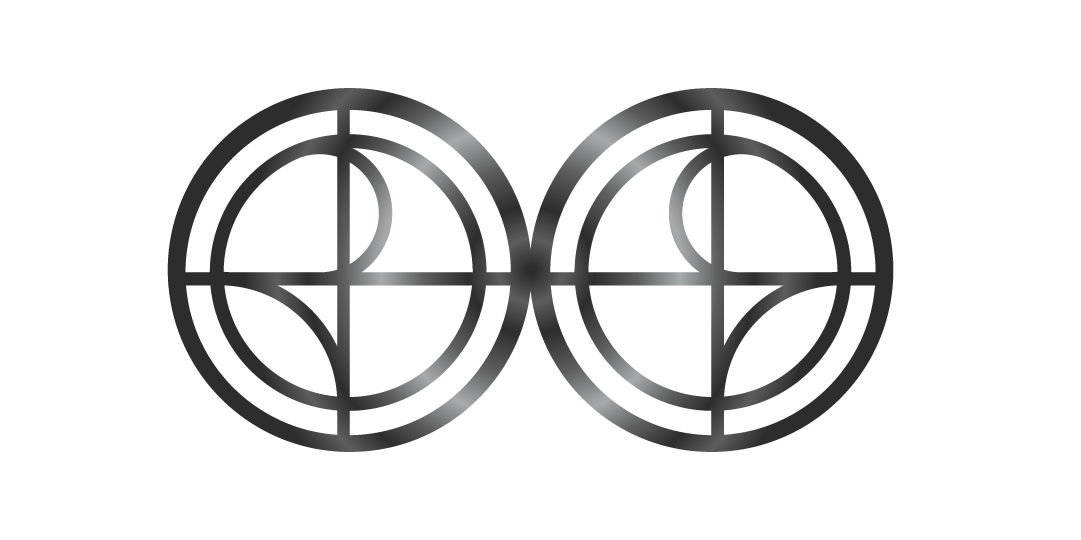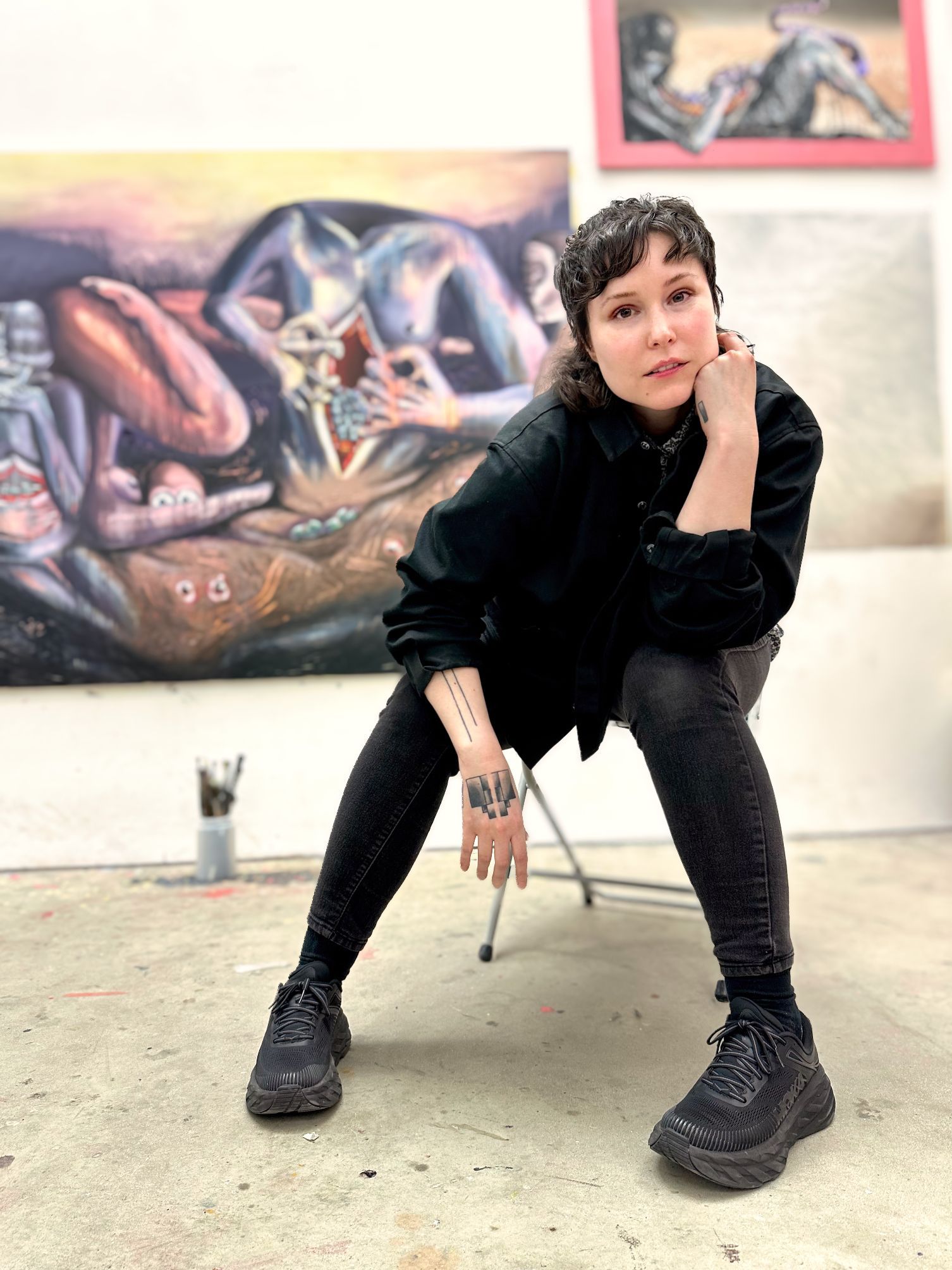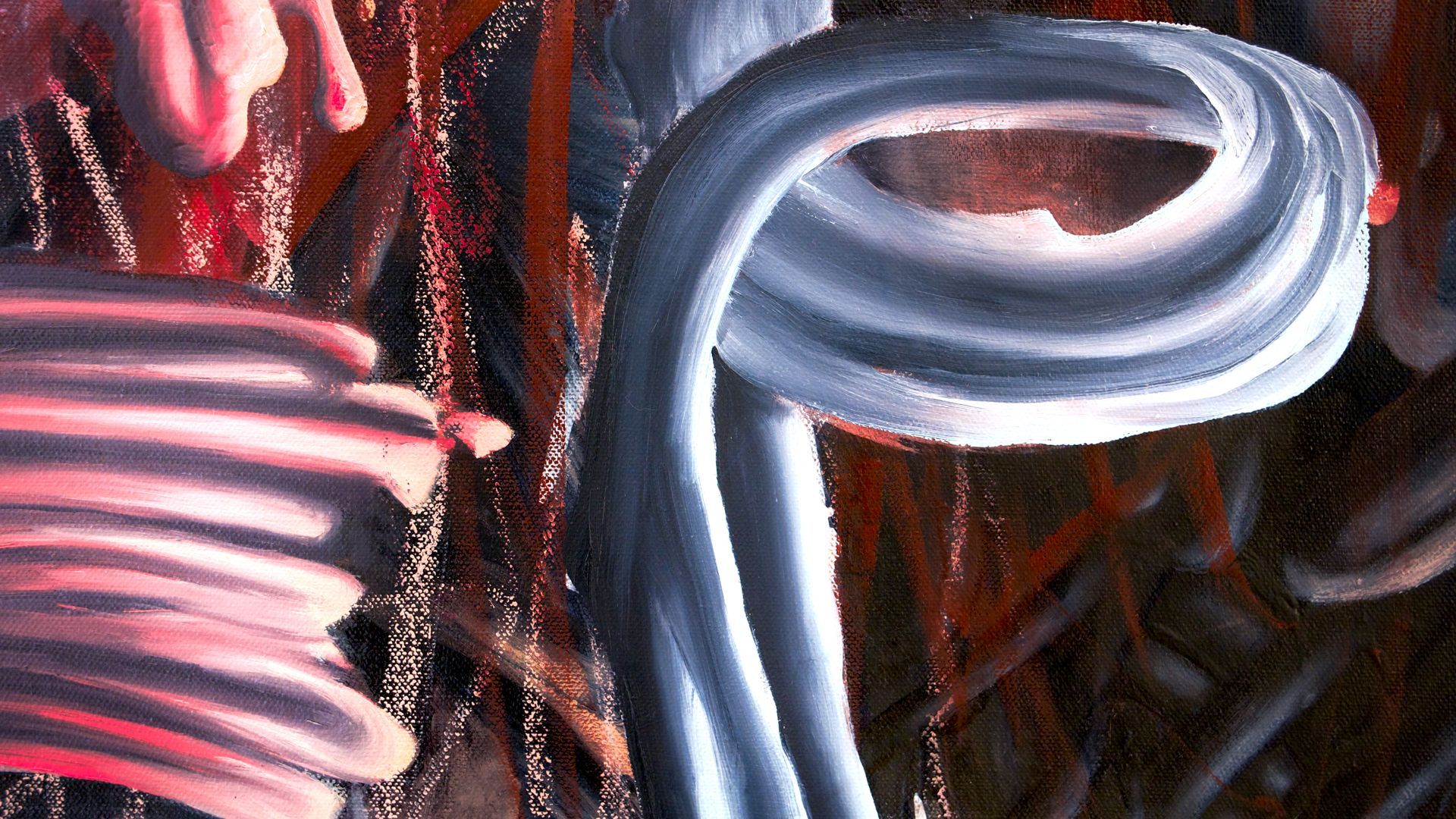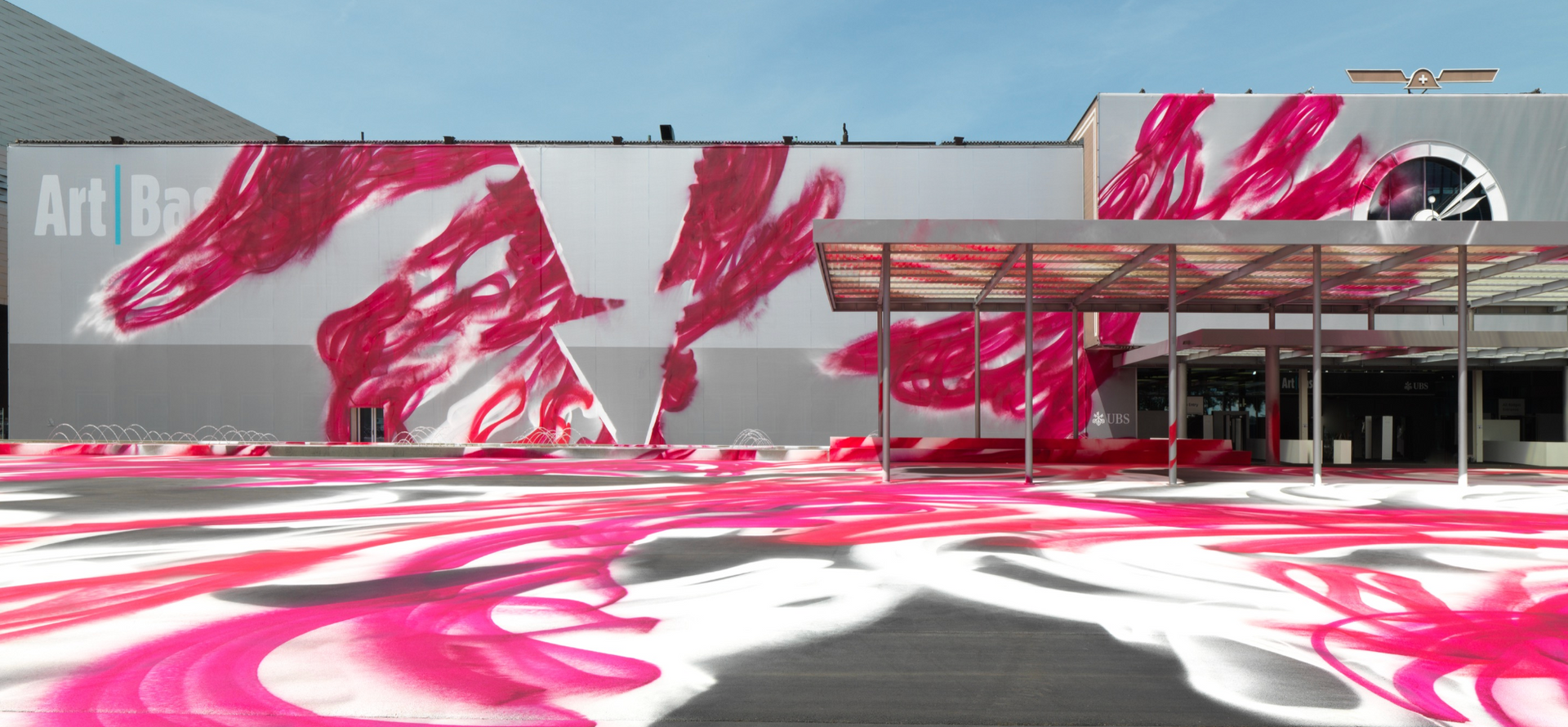Lala Drona is a Franco-American fine artist of Venezuelan heritage working between Paris and London. Her practice spans painting and video, probing the body not by appearance but by sensation: an interior landscape of memory, intervention, and transformation. She recently completed her Masters in Painting at the Royal College of Art.
Madame Sidewalk: Contemporary Painting at the Collision of Body and City
A critical reflection on how my painting Madame Sidewalk explores the entanglement of flesh, urban space, and power.
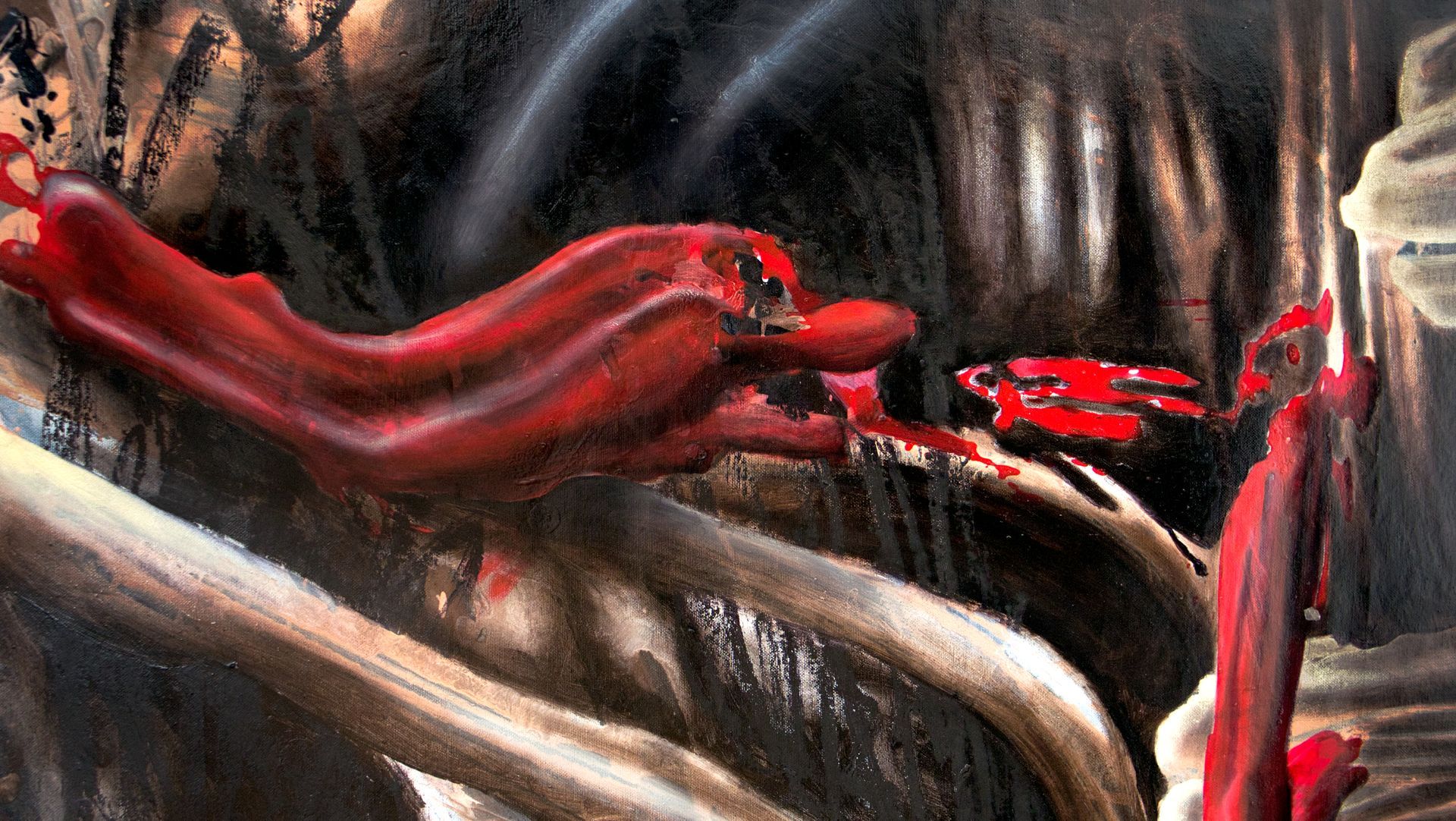
Painting the Collision of Flesh and Concrete
When I painted Madame Sidewalk (Oil on Canvas, 214x125cm), I wanted to capture the psychic violence of urban life. The painting stages a collision between body and city, where flesh and concrete merge into one another. Twisting strokes suggest both viscera and graffiti, at once raw matter and symbolic mark. Violent reds cut through darker architectural structures, evoking wounds and pressure points where desire meets control.
The title turns the sidewalk into a feminine body, both foundation and skin, constantly marked, erased, and renewed. Calling it Madame gives the city’s surface an erotic charge and a vulnerable humanity. Flesh becomes concrete, and concrete becomes flesh. What should feel stable begins to feel unstable, uncanny, even threatening.
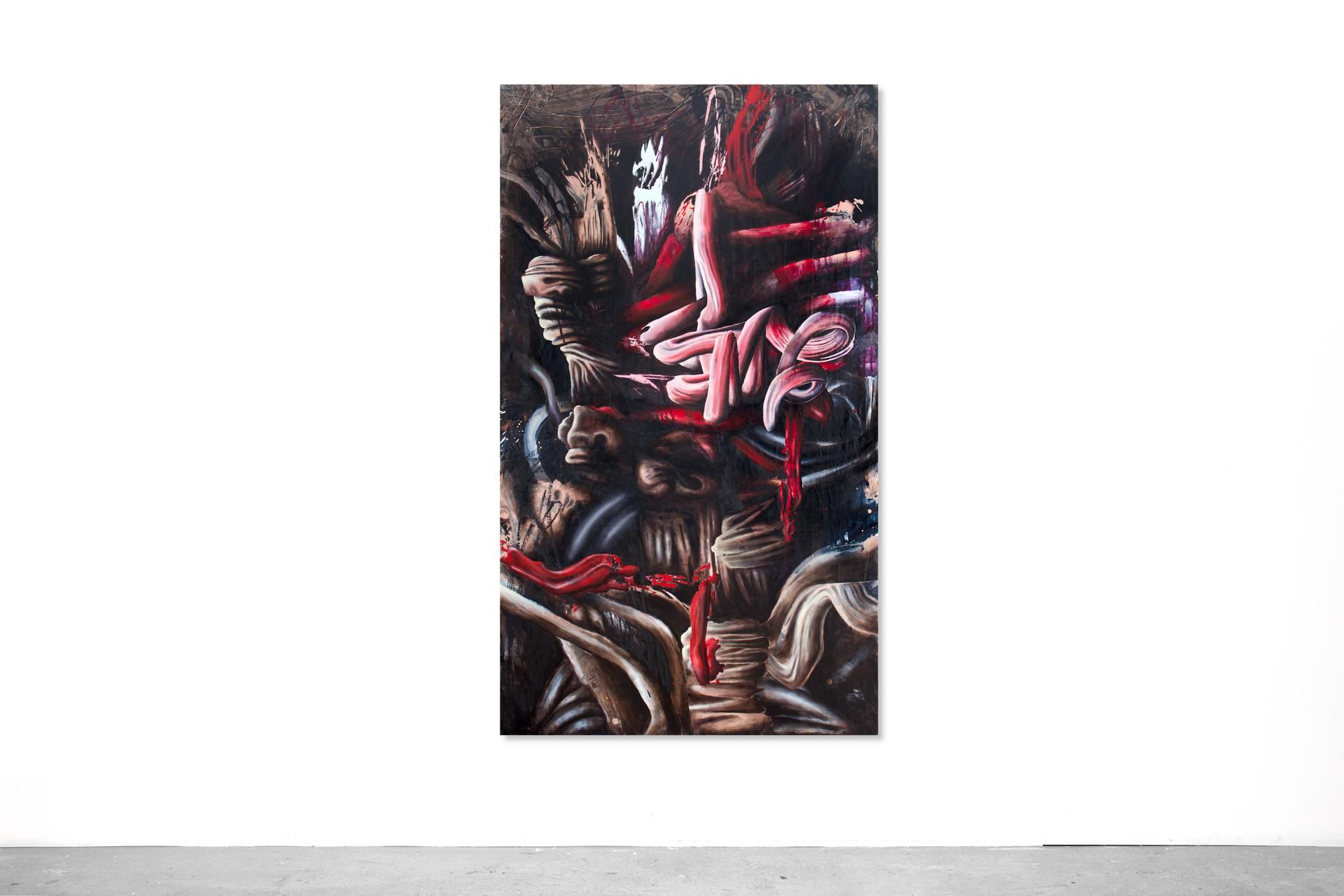
The City as Body
Urban space has always carried with it questions of power, control, and vulnerability. Henri Lefebvre described the city as something produced, a system that inscribes itself onto bodies and behaviors.¹ Judith Butler’s writing on bodies in public space pushes this further, showing how our flesh is shaped by structures that discipline, contain, or exclude.² In Madame Sidewalk, this shaping takes on literal form: the built environment bleeds back, folding into tendons, muscle, and fat.
For me, the painting reveals the city as a body under pressure. It is not a neutral surface but one that absorbs violence, resists containment, and bears scars. When flesh and concrete become indistinguishable, we see the psychic costs of inhabiting structures that both sustain and suffocate us.
Process: Painting Against Gravity
My process for this work began on the floor. Without gravity dictating flow, I circled the canvas, diving in on my knees and letting the marks accumulate from every angle. Once dry, the painting came alive on the wall, where I mounted it vertically and began to push and pull forms with the brush.
This shift from horizontal to vertical is crucial. On the floor, the canvas absorbs gestures like a body under incision. On the wall, the painting reveals its wounds and structures back to me, demanding to be reworked, covered, and exposed again. The process mirrors the tension between control and resistance that the work enacts.
Embodied Knowledge
The bodily insistence in my paintings is not abstract. Beginning at sixteen, I underwent multiple reconstructive surgeries. I filmed the later operations and replayed them in my studio, absorbing the colors of surgical blue, the pale translucency of fat, the fibrous resistance of ligaments. This embodied archive imprinted itself onto my visual language.
In Madame Sidewalk, those internal forms emerge into contact with the external city. What I paint is not only a metaphor but also a memory. The violence inscribed into the body becomes a way to think about the violence inscribed into space.
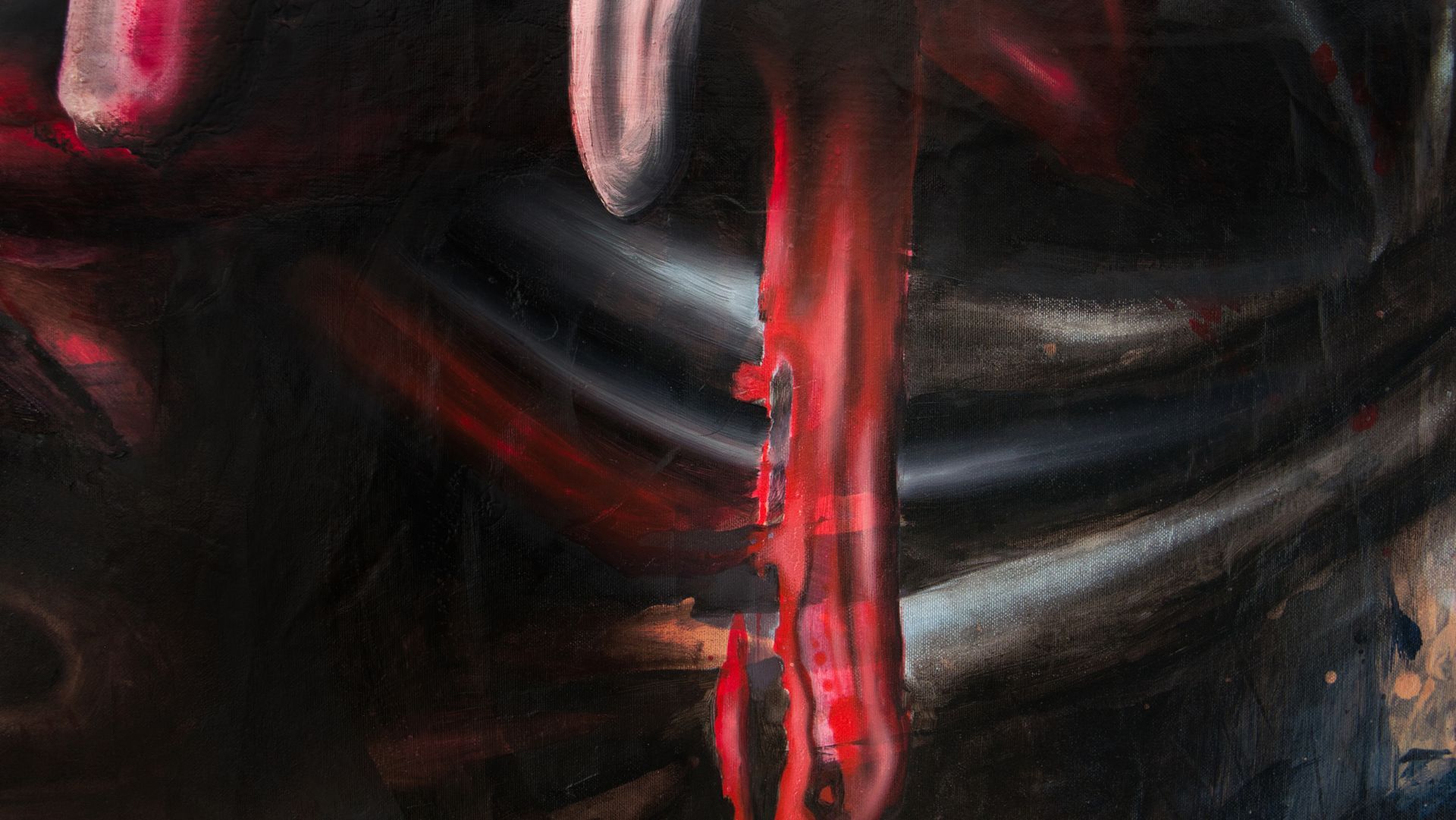
Madame Sidewalk as Urban Flesh
Philosopher Achille Mbembe describes how political systems inscribe necropolitics onto the body, making flesh the site of control and exposure.³ In this sense, the urban wound in Madame Sidewalk is both literal and symbolic. The city becomes a body under surveillance, under incision, under repair.
This is not a portrait of one body or one city but an allegory of how structures bear down on flesh, and how flesh resists. The painted surface itself becomes a sidewalk, written on, wounded, constantly renewed.
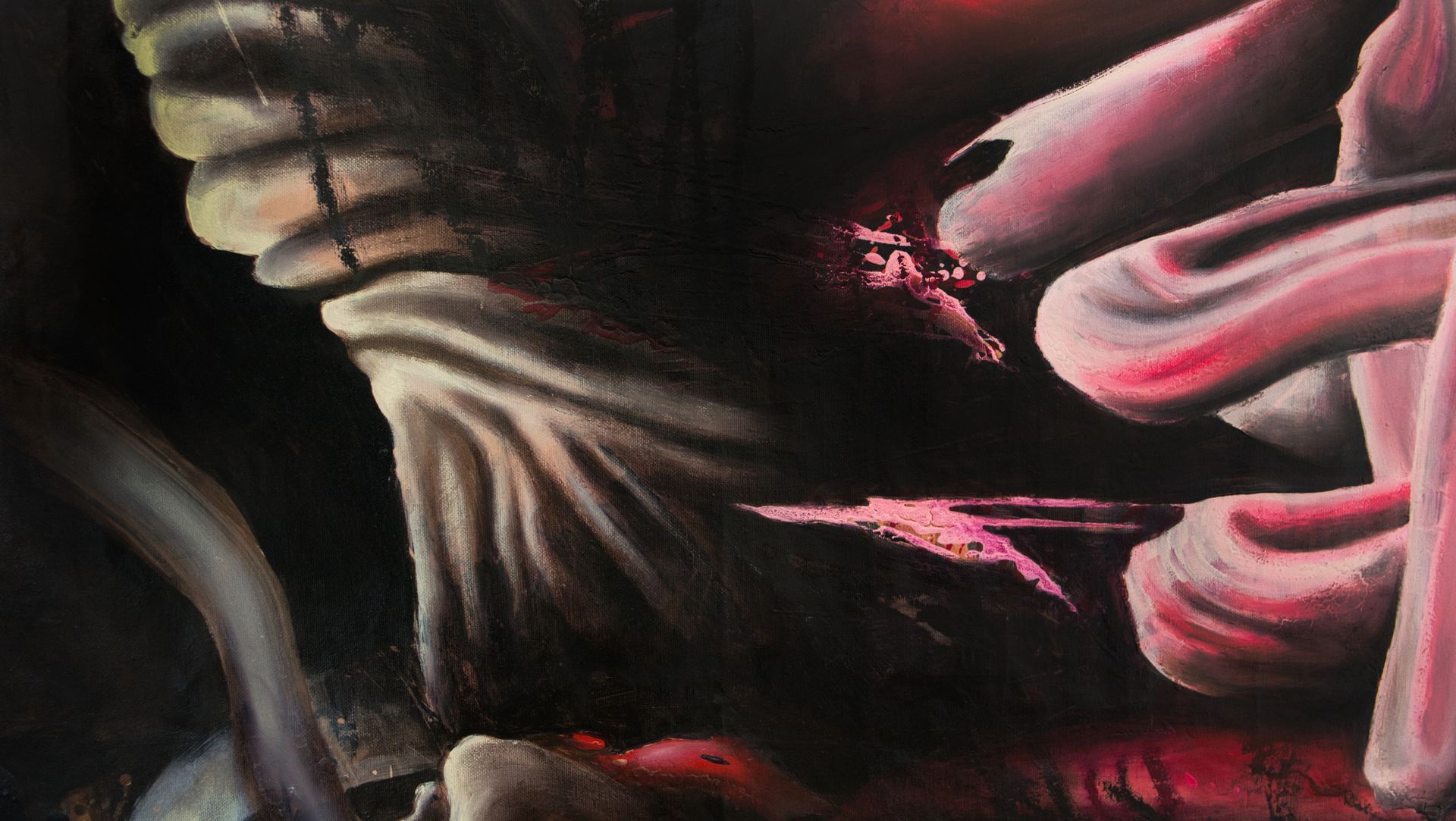
Closing
Madame Sidewalk is part of my current body of work that creates abstract, figurative, totemic bodies representing satirical invented feminine archetypes. This painting is the collision between body and city. Others in the series stage collisions between body and societal constructs. Together, these figures reflect on the psychic and political pressures that shape how we live, move, and desire.
You can see more of this series in my paintings, or read about another painting in the series here.
Bibliography
- Lefebvre, Henri. The Production of Space. Wiley-Blackwell, 1991.
- Butler, Judith. Bodies That Matter: On the Discursive Limits of Sex. Routledge, 1993.
- Mbembe, Achille. Necropolitics. Duke University Press, 2019.
- Kristeva, Julia. Powers of Horror: An Essay on Abjection. Columbia University Press, 1982.
- Irigaray, Luce. Speculum of the Other Woman. Cornell University Press, 1985.
